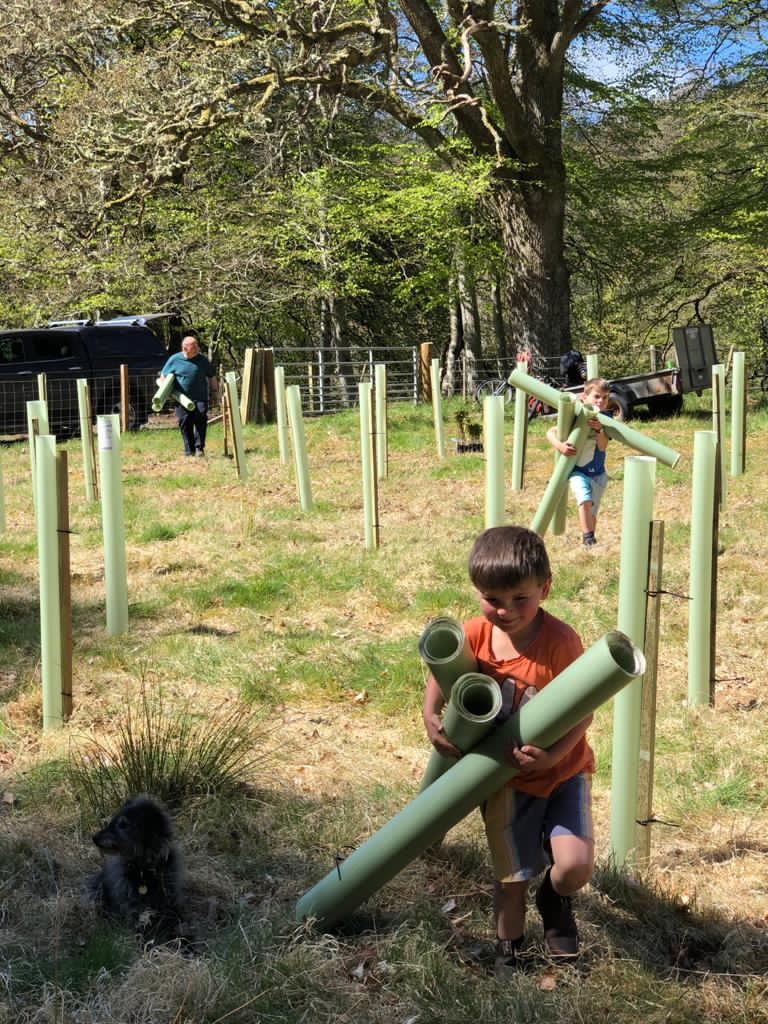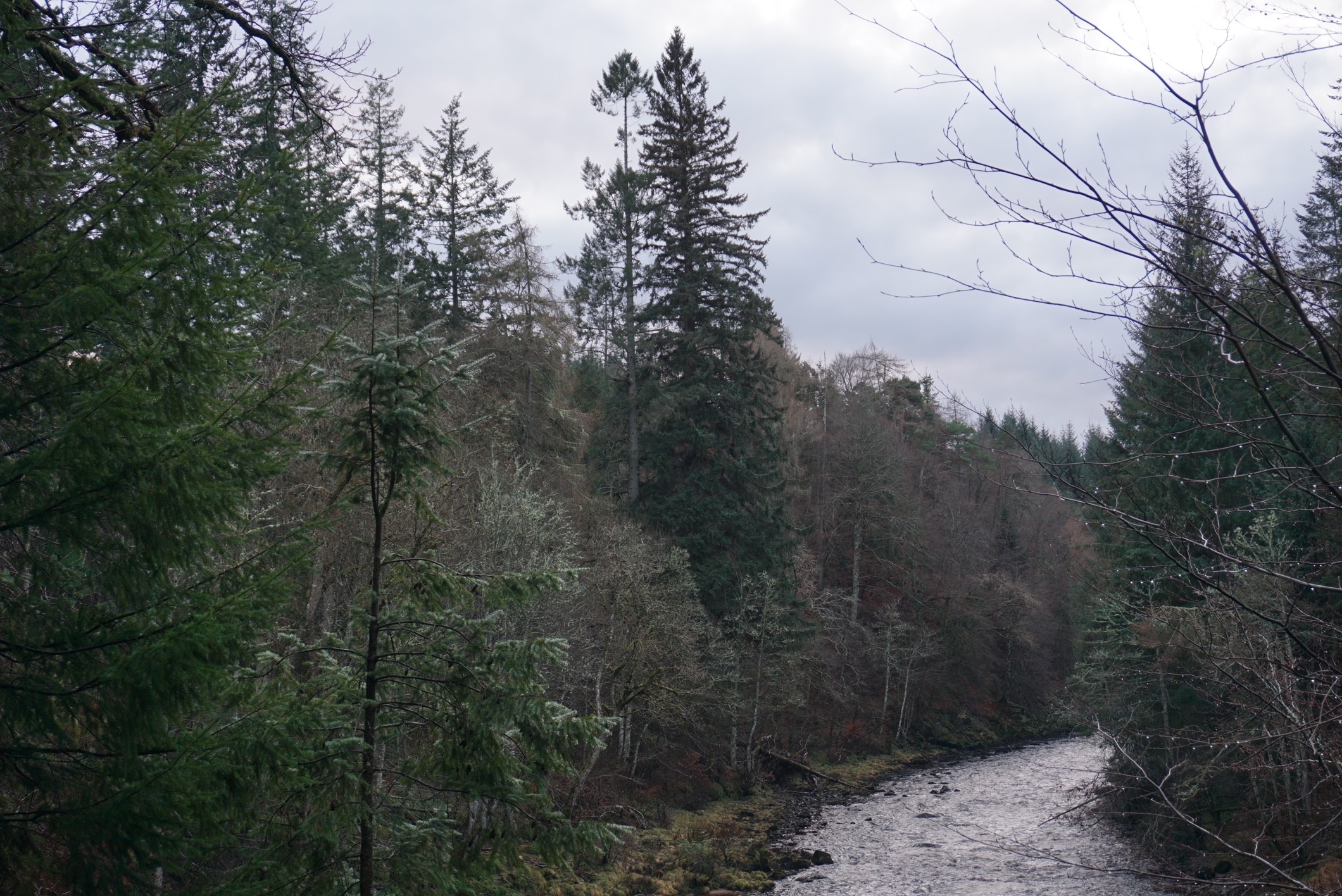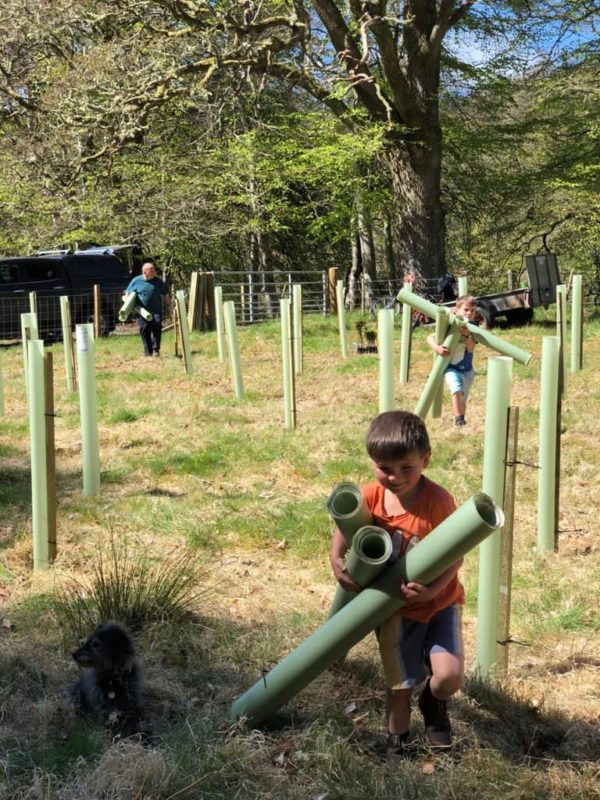It’s National Tree Week this week. Every year since 1975 National Tree Week has marked the start of the winter tree planting season with a programme of events – that cannot happen this year because of Covid but there’s lots happening on line.
Here at Logie trees are a major part of our lives. Moray, in the days when counties still existed, was the most wooded county in Scotland in relation to its size. That means we have a lot of experience in growing trees as well as a hugely varied mosaic of trees of all types.
There are champion specimens of their species, rare and interesting plant and tree communities, particularly on the river banks, and commercial plantations producing timber for our own sawmill, other mills and an energy efficient biomass plant which heats Logie Steading and the surrounding houses.
As you walk along the river paths keep your eyes open for some of the features which make trees, where they grow and what can be done with them, so special. There is something about the river valley – probably a combination of fertile soils and damp conditions – that seems to “draw” up the trees.
On an old 1775 map the bank behind the Steading is marked as “Wet Spoutie Brea” – ideal for growing trees.

As you walk upstream along the steep bank on the path from the steading play park you’ll see some newly planted trees on your left. This year we teamed up with The Woodland Trust to plant an area which needed some attention and will forever more be known as “Covid Copse”. The Trust gave us the majority of the plants, oak, birch, hazel and alder and the shelters to help them grow; we added some specimen tress grown here at Logie, did the planting and will look after the trees in future.

Before you cross the Divie Bridge look at the plantation in front of you. These are Douglas Fir (Pseudotsuga menziesii) and Sitka Spruce (Picea sitchensis). There are still one or two particularly big trees visible probably planted in the early 20th century.
In the 1960s two trees from this plantation were sent to Singapore to be used as radio masts.

If you get beyond Randolph’s Leap look out for these two trees. The one on the left is a Douglas Fir and, at 60m the tallest in Moray, but the one on the right is the special one – it’s a Sitka Spruce (Picea sitchensis) and, at 63m, is the tallest in the country.
The past year has made a lot of people stop and think a bit about lifestyles, mental and physical health and the environment in which we all live and on which we depend. Trees have a big part to play in how we deal with climate crisis, they help us to stabilise, and even restore, biodiversity loss, they give us areas for peaceful recreation and thought and last, but by no means least, they provide a livelihood for those who grow and process them.

